Kellie Doherty is a proudly bisexual science‑fiction and fantasy word‑slinger hailing from Eagle River, Alaska—where the winters are long, the nights are bright, and the plot bunnies run wild. Her debut duology Finding Hekate and Losing Hold put queer space opera on the map, while her ongoing five‑book “intertwined standalone” Broken Chronicles series—Sunkissed Feathers & Severed Ties, Curling Vines & Crimson Trades, and Ink Stains & Ill‑Fated Lies—keeps bending genre expectations with sapphic romance, found family, and more disaster queers than you can shake a +3 vorpal sword at.
Just released was Fatal Spores & Fiery Paths (Desert Palm Press, March 2025), featuring a bisexual lead, a gender‑fluid mage, and a non‑binary sibling who refuses to stay in the background. When she’s not penning stories that refuse to erase bi culture, Kellie juggles a full‑time publishing gig, freelance editing, and life under the midnight sun—proving that visibility isn’t just a mission statement; it’s a lifestyle.
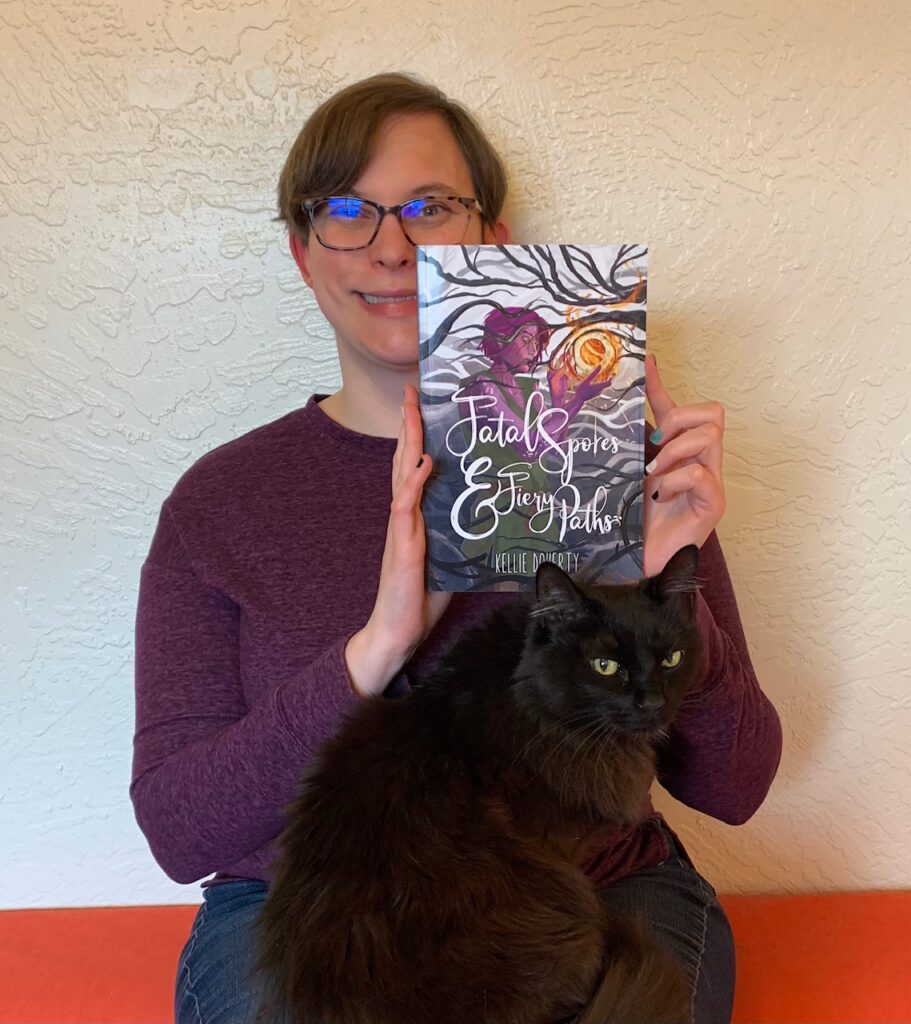
And now, on to the interview!
Have you had a big presence at Conventions (ie. Flame Con.)? Either way, how has it been interacting with your fans, whether in person or online?
I’ve been to some conventions, yes! EvilExpo, Imaginarium, IQARUS, and Rainbow Space Magic are the ones that come to mind, along with some writing conferences like PNWA, Willamette Writers, and Alaska Writers Guild. I’ve only done local Alaska events since COVID, but I’m hoping to travel again soon.
Interacting with my readers is always so lovely, no matter if it’s in-person or online! Readers in general are wonderful people, but mine are also geeky and queer, too, so it’s a great community to be a part of. I recently sat on a romance panel at our newest romance bookshop (shoutout, Beauty & the Book!) and so many lovely humans showed up and asked wonderful questions for us panelists. After the panel was over, a few of them even came up to me to say hello and ask me about my books. I love those quiet interactions. So much fun! Quite a few of my readers are online, though, and I can’t thank them enough. Those online readers cheer me on every single day, either through kind-hearted DMs, commenting lovely thoughts on my posts, or expressing excitement for my next projects. In-person or online, I appreciate them all!
How does your personal identity and experiences as an LGBTQ+ individual influence your creative process and the stories you choose to tell?
Great question! Yes, as a bisexual lady myself I’ve chosen to tell queer stories, with sapphic (or women-loving-women) stories and mainly bi main characters, because I wanted to represent my community. Telling stories with queer characters—especially bisexual characters—helps to celebrate being part of the community and helps open the conversation around queerness in general. When people think of queer stories, they often think of the coming out process. And rightly so! It’s a super important—and impactful—part of being queer, coming out to our family and friends and such…but it’s only one chapter of our story. I wanted to focus on the other pages. So, my stories have characters who have adventures, fall in love, make disastrous mistakes, and do badass things…and are also queer. In my worlds it’s normal, loved, accepted, and celebrated to be queer. I also wanted to highlight bisexual characters because I’ve seen the bi erasure in real life bleed over into the entertainment world—TV shows, movies, games, books—and I wanted to combat that.
Can you walk us through your typical creative process? How do you develop ideas, create characters, and bring your stories to life on the page?
Of course! My process changes depending on the length of the story I’m writing. For my flash fiction pieces, poetry, and short stories, I normally go on vibes alone. For those shorter pieces, I usually start off with a single idea, or image, or character in my mind’s eye that I’d like to explore. For example, my flash fiction piece Ashes & Tulips, I started with an image—a person being reincarnated in a bed of tulips and then fleshed it out from there. With only 300 words, every single one counted. For longer works, like my novels, I have a more detailed process. There, I like to start with the main characters first—who they are, what their wounds are, how will they change throughout the story, what will they learn, who will they meet, who are their people—because characters are the most important part of any story. After character creation, comes plot (i.e. what happens in the story, what challenges will the characters face, etc.), then world (building out the character’s starting point then building up from there), and then I finally get to write the story itself.
Developing ideas, creating characters, and bringing my stories to life starts and ends with the details. That, and dedication and creativity. You can have a brilliant idea but if you don’t have the dedication or the creative ability to flesh it out then it’ll only ever just be an idea—not a story. I like to bring realness into my stories, which might sound strange coming from an author who writes about nanotechnology and wyverns, but it’s true! In order to make my stories come to life I make them relatable, grounded. So even if I am writing in my high fantasy world about Misti’s companion animal, a vulnix named Zora, I add in little details that the readers can connect with. The swell of joy when Misti sees Zora. The chirping sound Zora makes to say hello.
How Zora butts her forehead into Misti’s. The calmness Zora brings Misti whenever she’s around. So, while no one on earth has a vulnix, anyone with a pet can relate to Misti and Zora’s bond. I try to weave in all the senses, too, so the character feels real to the reader. I weave in different cultures, accents, regions, lifestyles, foods, histories and more so the world is believable. I also write about themes that readers can relate to—ones of love and friendship, found family, death and grief, war and faith—because those ground the readers, too.
I do the same with character creation! I start with a simple idea, then layer in more complex emotions, insecurities, flaws, and positive attributes until I have a well-rounded person. Really pay attention to the “well-rounded” part of your characters. You can’t have a character who is always good, does everything right the first time, succeeds in all aspects of their life…because no one is perfect. So, add insecurities and flaws, make them fail at their tasks, have them make horrible mistakes and own up to them. Doing so makes the characters (say it with me!) relatable and more grounded in the reader’s mind.
Are there any specific comic book artists or writers who have influenced your style or storytelling approach? How have they inspired you?
Writers for sure! Jane Fletcher’s The Celaeno Series helped me expand my hone my dialogue—hers is so snappy that I couldn’t help but be influenced by it. Rebecca Thorne writes in a similar witty style, and the way she uses puns (Can’t Spell Treason Without Tea, anyone?) inspired me to have fun with my storytelling. Becky Chambers use of worldbuilding, how she expands her worlds little by little, also helped influence how I try to expand my world. Have you read Chambers’ novella, A Psalm for the Wild Built? If not, check it out! I’d also say that Matthew Mercer, the DM behind Critical Role, is also an inspirational storyteller, especially for my fantasy series. His twists are legendary and made me want to include some major twists in mine, too.
How do you envision your work impacting readers, particularly those who identify as LGBTQ+? What messages or emotions do you hope to convey through your stories?
I touched on this a little bit above but to expand on it a little bit: the main message or emotion I’d like to convey through my stories is acceptance and self-love. Acceptance of self, of powers, of found family, of place. I want them to accept themselves as they are and be proud of that. I want my readers to see themselves in my characters—bisexual, lesbian, gay, nonbinary, trans, queer, and everything in between—and know that they, too, can be badass adventurers and hardcore spaceship captains. I want the message to be hopeful, joyful, and celebratory!
Who is your favorite Federation Captain, and why?
Captain Kathryn Janeway, of course! She’s creative, loyal, brave, and funny. Plus, she has the best crew on the Voyager. [As an added bonus, Seven of Nine was an inspiration for my sci-fi duology: Finding Hekate and Losing Hold.]

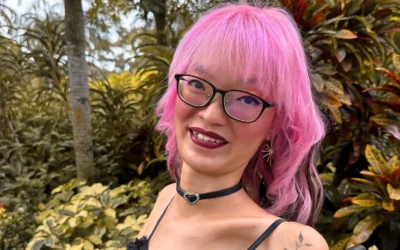
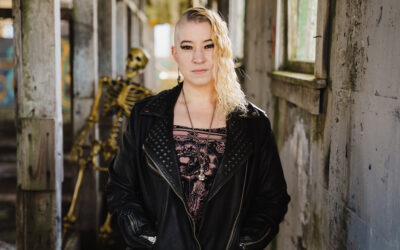

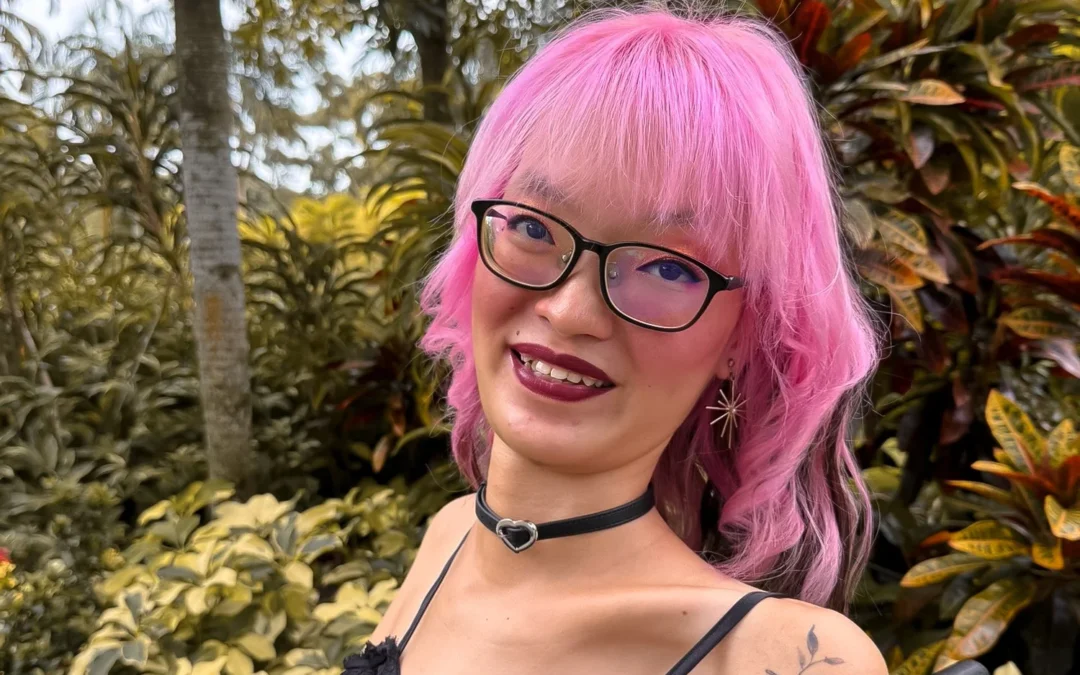
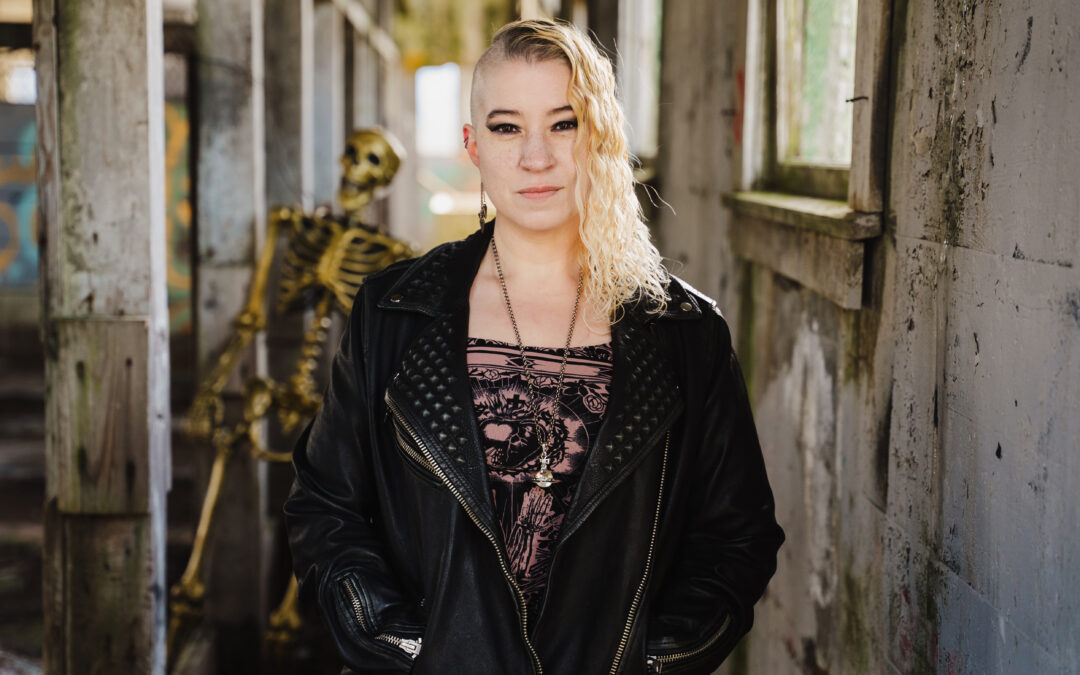

0 Comments